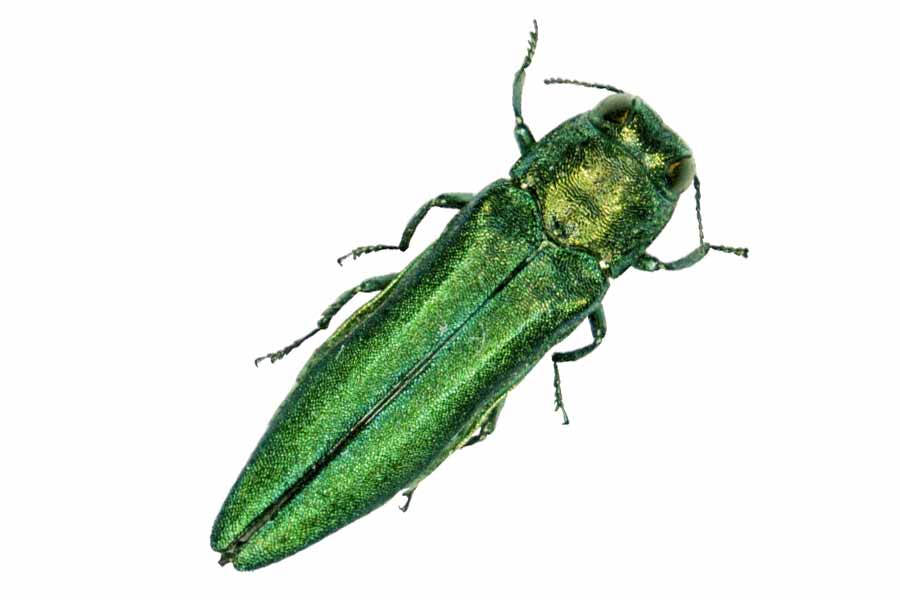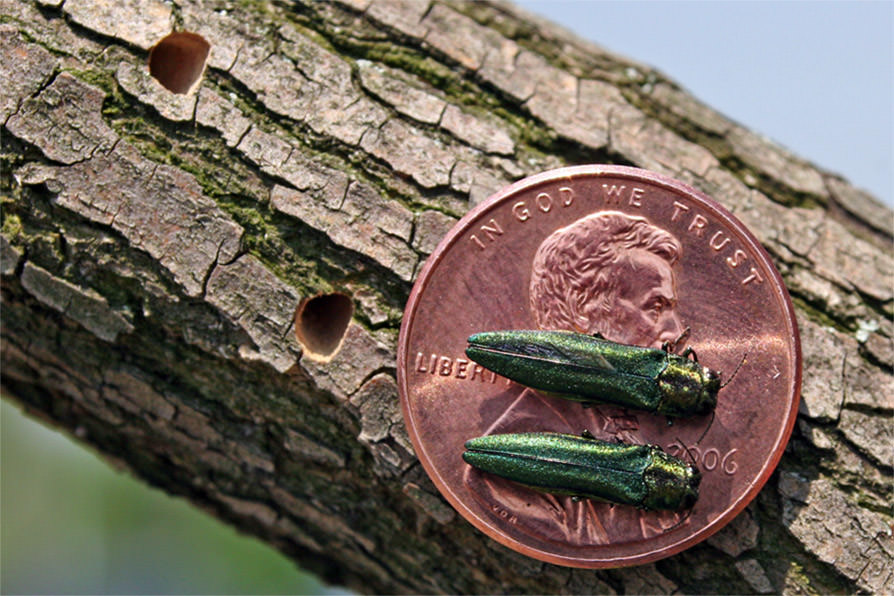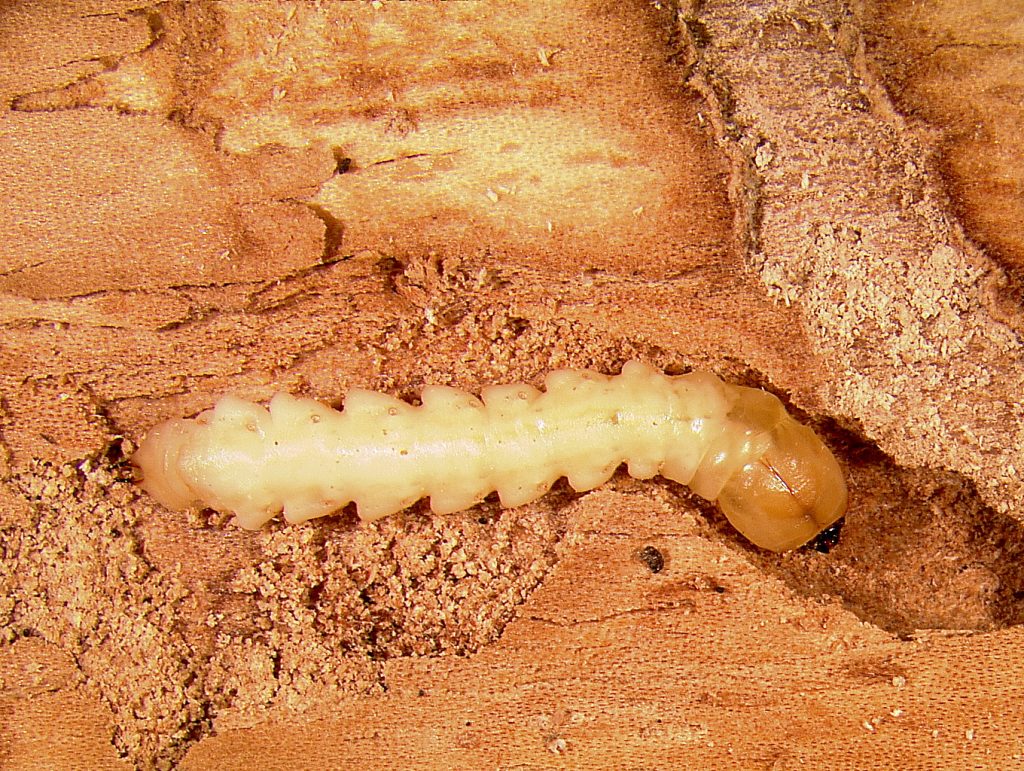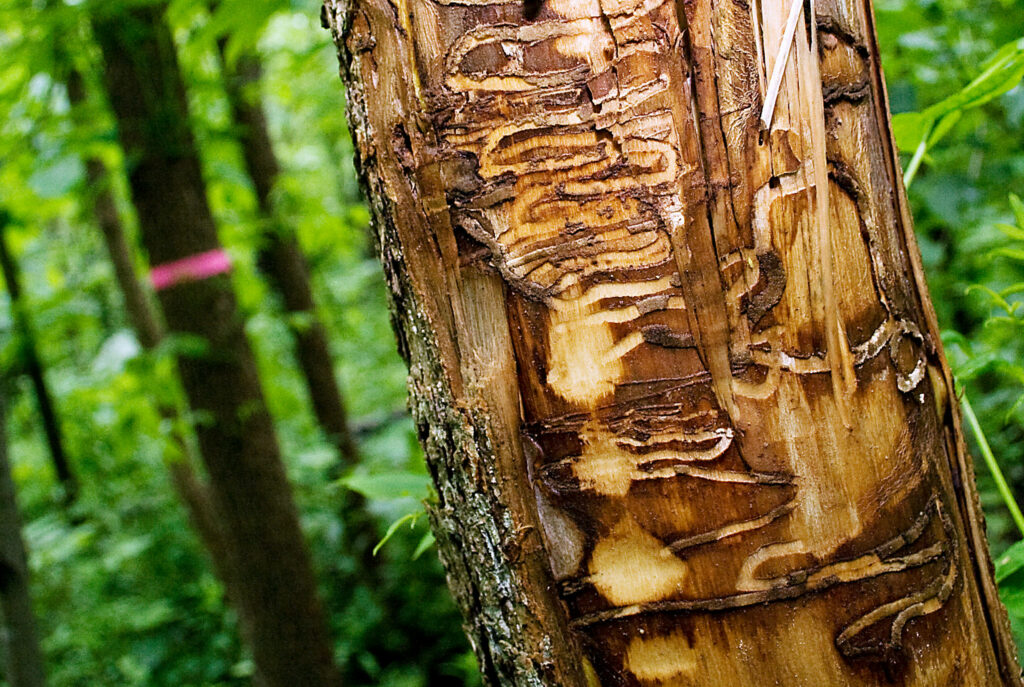The emerald ash borer (Agrilus planipennis), sometimes referred to in the industry as “EAB” has become one of the most destructive tree pests in the United States in the last several decades. Yet, this small beautiful beetle that is native to Asia has one been in the United States since 2002. These metallic emerald, green insects are only about a half an inch long. From what we know, they were imported into the United States, unknowingly, in 2002 on packaging materials shipped from China. Before long, these beetles quickly spread across the United States.

Emerald Ash Borers In Texas
The first recorded observation of the emerald ash borer was first observed near Detroit, Michigan around 2002. In 2016, the Texas A&M Forestry Services (TFS) confirmed that emerald ash borers had officially made its way into Texas. It was first observed in eastern Texas, in Harrison County near the Louisiana border. As of June 2022, the emerald ash borer has now positively been identified in Dallas and at least seven additional Texas counties, since being first observed in Texas.
These counties include Bowie, Cass, Denton, Marion, Parker, Tarrant, and Wise counties as well. The Texas A&M Forest Service began placing insect traps around the state and monitoring for emerald ash borers in 2012. Undoubtedly emerald ash borers will continue to move in and around these known areas and it is possible that new detections will be made in other counties too. We are doing our part in preventing this spread by informing the public and trying to salvage the infested trees that still have a chance.

What Are Emerald Ash Borers?
Emerald ash borers are small, green beetles that are originally native to Asian countries. In the last two decades, these beetles have aggressively moved across the United States leaving behind a wake of distraction. Above is a close-up of an emerald ash borer (left) and an image (right) of two emerald ash borer adults on a U.S. penny for a size reference. This flying menace’s name comes from its emerald green color and the destructive feeding habits of its larvae on ash tree species.
The emerald ash borer larvae are creamy white in color, with a flat and segmented body. They can reach up to 1.5 inches long when fully grown. The larvae are not usually seen unless the tree’s bark is peeled back, as they spend most of their life cycle under the bark of ash trees. Adult emerald ash borers are known for its distinctive, brilliant metallic-green color. It is is roughly the size of a cooked grain of rice. Its slender body is flattened and elongated, and its compound eyes are kidney-shaped and black. It is roughly the size of a cooked grain of rice, with a slender, flattened, and elongated body.
While most native insect pests and other pathogens typically don’t cause wide-spread damage, because emerald ash borers are an exotic species, it benefits from the lack of native predators that would otherwise help control its population growth. Unfortunately, it also doesn’t matter how healthy your ash tree is – emerald ash borers will attack both healthy and stressed trees.

The Damage They Cause to Trees
Ash trees (Fraxinus spp.), which are the chosen hosts of emerald ash borers, are one of the most abundant tree species in the United States. They currently number around 7 to 9 million, with tree populations most dense in northern regions. So far, the emerald ash borer has killed 40 million trees in Michigan alone, and the spreading of the beetle has not stopped. Currently, the beetle has been found in 36 states, along with Washington D.C. and parts of Canada as well. Texas was added to the list in 2016 after Texas A&M Forestry Services confirmed their presence. In fact, according to a the Dallas Morning News, approximately 13%, or almost 2 million, of Dallas’ estimated 14.7 million trees are at risk.
Being as small as they are, many property owners may not realize they have emerald ash borers in the area until one of their trees becomes infested. Adults emerald ash borers are most often seen in late spring and early summer, however it’s not the adult emerald ash borers that you should be worried about. In fact, it is the when they are in their larval stage that they do the most damage to local trees. Adult beetles lay their eggs on the bark of ash trees, and the larvae bore into the bark to feed on the inner wood.
The larva burrows down into the trunk of ash trees and feed under the bark, leaving “S”-shape trails called “galleries” everywhere they go. This ultimately causes the loss or damage of the tree’s phloem and inhibits the infested tree’s ability to carry water and nutrients between its roots and its leaves. The typical “D-shaped” exit holes created when an adult emerald ash borer leaves the ash tree can also typically be seen. They are usually the very first sign of an infestation. The presence and activity of these larva disrupt the tree’s ability to transport water and nutrients, ultimately leading to the tree’s decline and death within a few years.

Treating Any Infested Trees
No Ash trees are safe, as all of the 16 different Ash species in the United States are susceptible to emerald ash borers and the damage they cause. North Texas has seven Ash species that can be found planted throughout neighborhoods and growing naturally in riparian areas, especially within the Trinity Forest in south Dallas. Interestingly, emerald ash borers also attacks White Fringe Trees (Chionanthus virginicus), therefore, it is important to always know what to look for.
Signs and symptoms of the pest being present include:
- The thinning or dying of tree crowns
- Suckers at the base of the tree
- D-shaped exit holes (where the adult beetles emerge)
- Splitting trunks
- Heavy woodpecker activity
Once a tree is infested with emerald ash borers, it typically takes 2-3 years for the tree to die. There are treatment plans, but their effectiveness become limited once the tree is in serious decline from infestation. Typically, this means that a tree can potentially still be saved as long as at least two-thirds of its canopy are still intact. Once a tree loses more than a third of its canopy the chances of recovery is much less likely. For areas with multiple, actively infested trees, the removal of weak, susceptible trees can help slow the spread of this destructive beetle. The spread can also be slowed by planting new trees that are not susceptible as well.
With Ashes being one of the most common trees in North Texas, there are many of our beloved native trees left vulnerable to these pests. At Tree Tech, we are committed to help stop the spread of these beetles across Dallas, Fort Worth and the rest of the metroplex. We are also committed to saving the infested Ash trees that still have a chance. If you live in Tarrant, Dallas, or Collin County and have ash trees on your property or, if you suspect a tree is in trouble, contact us so that one of our expert arborists can visit your property to provide management recommendations.

Recent Comments